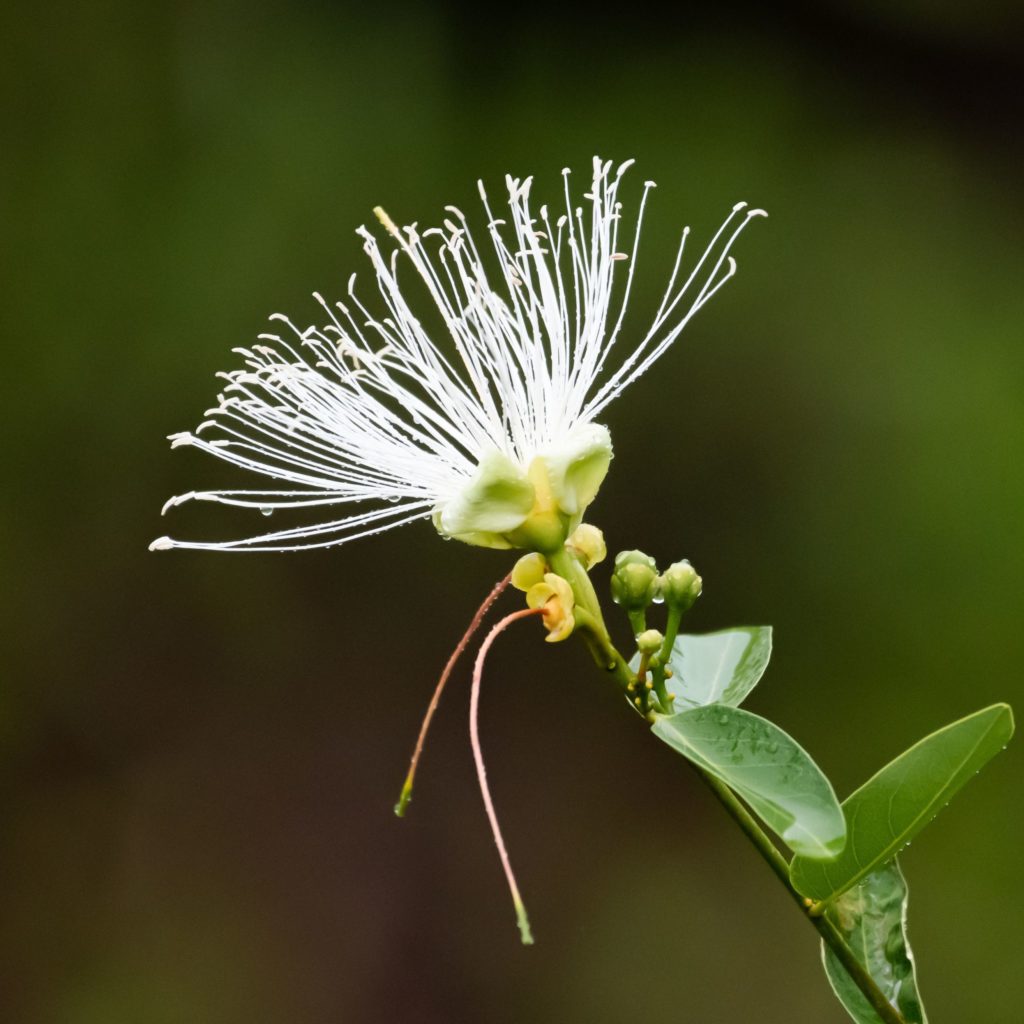I missed seeing fireworks on the Fourth of July, but since the recent rain some local trees have been showing off their own bright sparklers.
There are a number of members of the caper family growing in the Virgin Islands. However they are not from the branch that produces the kind of capers that are edible – those are grown in the Mediterranean area.
The native Virgin Islands capers have their own charms. For one thing their thick, dark leaves mostly stay green, even during the dry season when many other trees go limp or drop their leaves. But it is their profusion of flashy white flowers that has really caught my attention recently.
The Limber Capers or Dogwoods (Cynophalla flexuosa) are in fact loose-limbed shrubs, sometimes bending over and acting more like vines when they are mixed in with other trees. They have large spiky flowers, and when the flowers all open up overnight it looks like a new constellation has appeared right in the front yard.
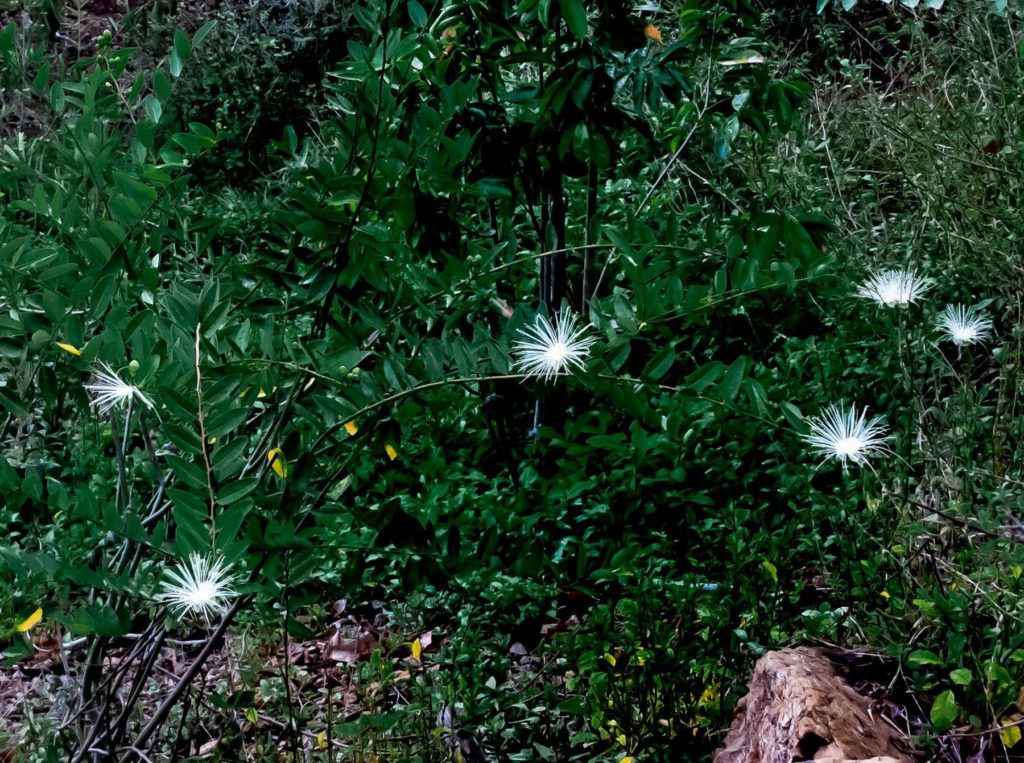
The flowers don’t last long though. They are already droopy by the end of the day after they bloom. But they aren’t finished showing off then. Once the flowers have passed, their bean-like seed pods are also striking, because they have skins that are bright red inside.
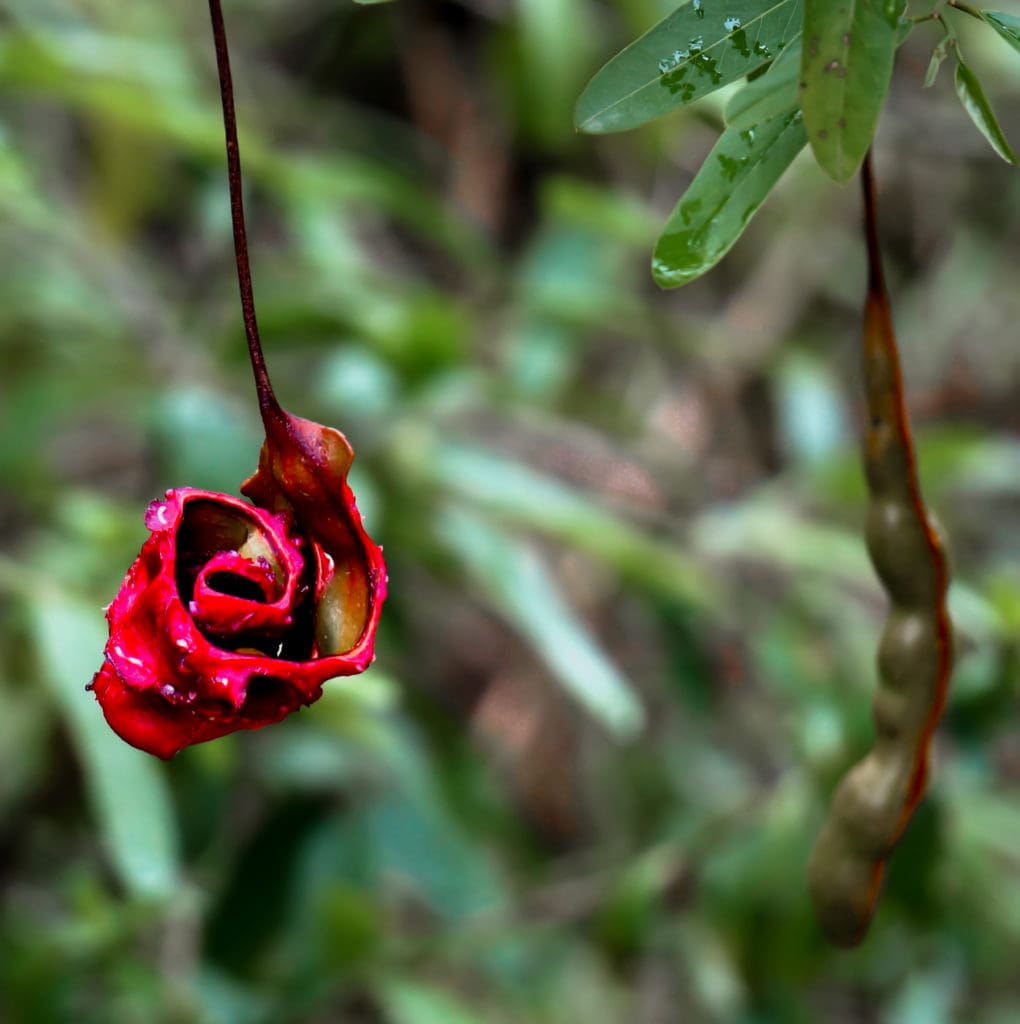
The Leatherleaf Capers (Cynophalla hastata) are shrubby like the Limber Capers but their leaves are thicker and rounder. The flowers are also more compact, and sometimes have a pinkish tinge.
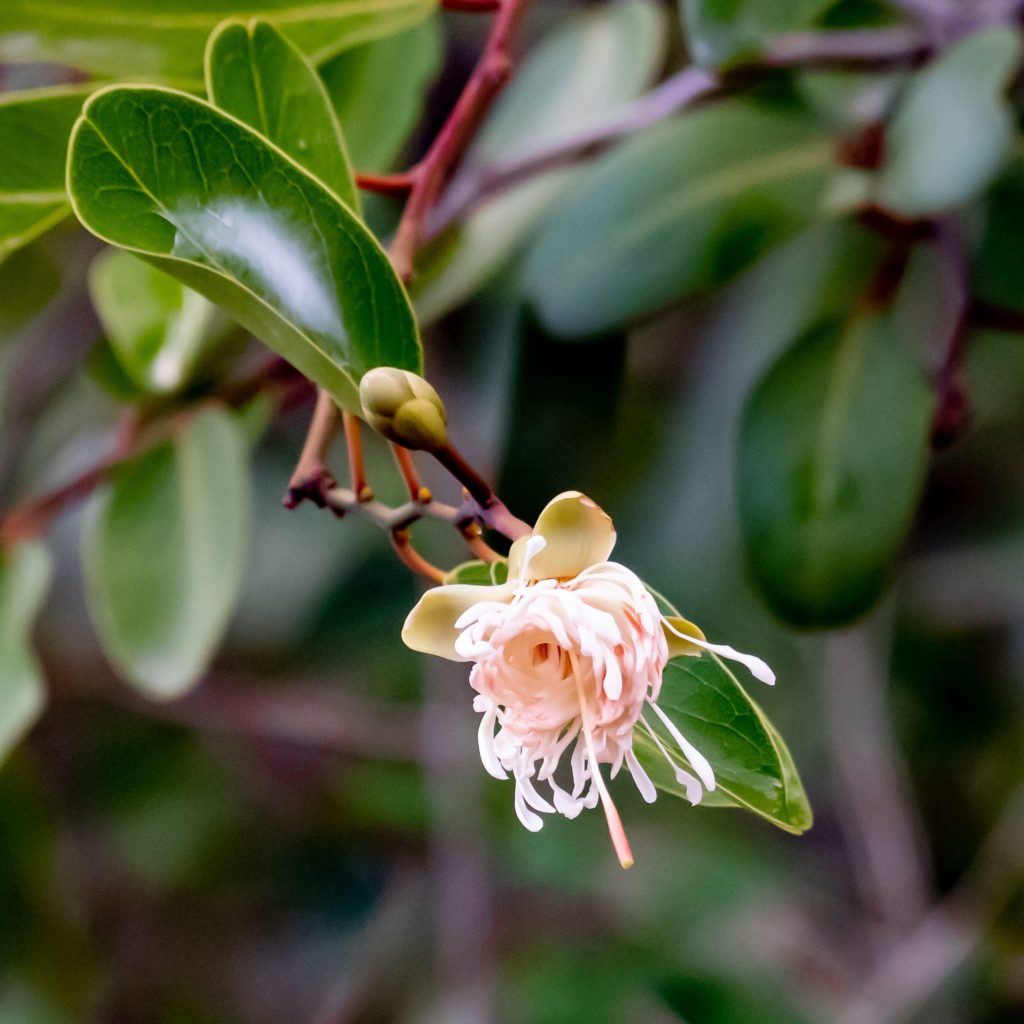
White Capers (Quadrella indica) are larger trees, standing up straight with regularly-spaced branches. Their white flowers are smaller and more delicate than those of the Limber Caper.
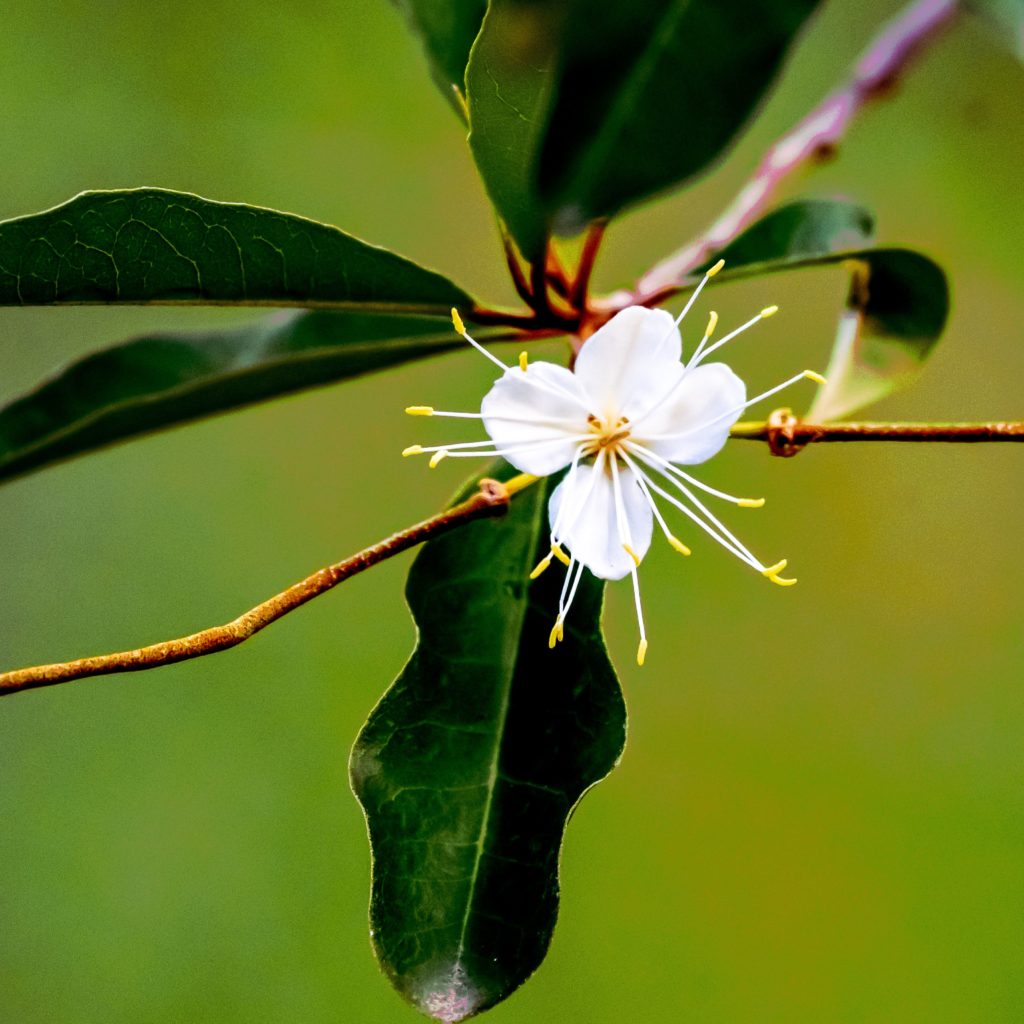
My favorite is the Black Caper (Quadrella cynophallophora) also sometimes called Black Willow or Jamaican Caper. It has shiny dark leaves and is bushier than the White Caper, but has similar delicate white flowers – at least when they first bloom. Later, like those fireworks that change color in the air, the flowers switch from white to purple.

All of these flowers have been bursting into bloom near my house recently. No loud blasts, though, just quiet celebrations of July in the Virgin Islands.
Gail Karlsson is an environmental lawyer, writer and photographer – author of The Wild Life in an Island House, plus the guide book Learning About Trees and Plants – A Project of the Unitarian Universalist Fellowship of St. John. See uufstjohn.com/treeproject and gvkarlsson.blogspot.com. Follow her on Instagram @gailkarlsson


